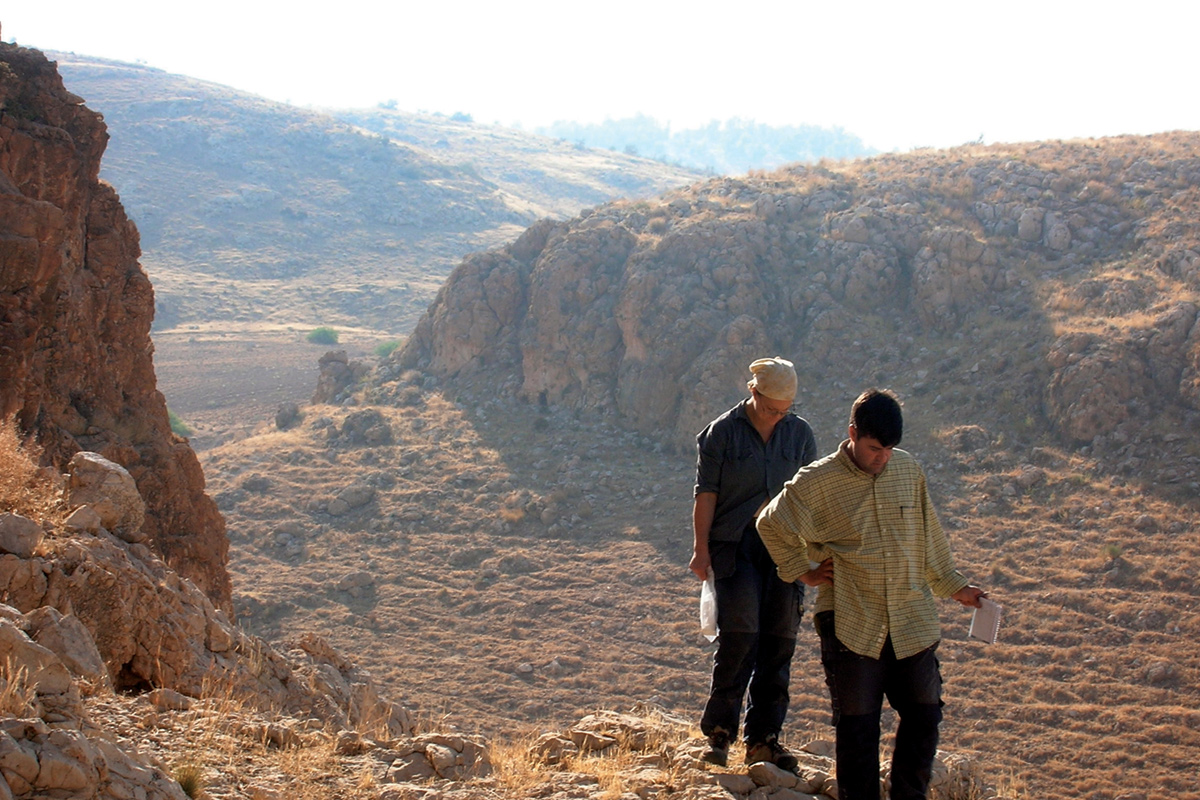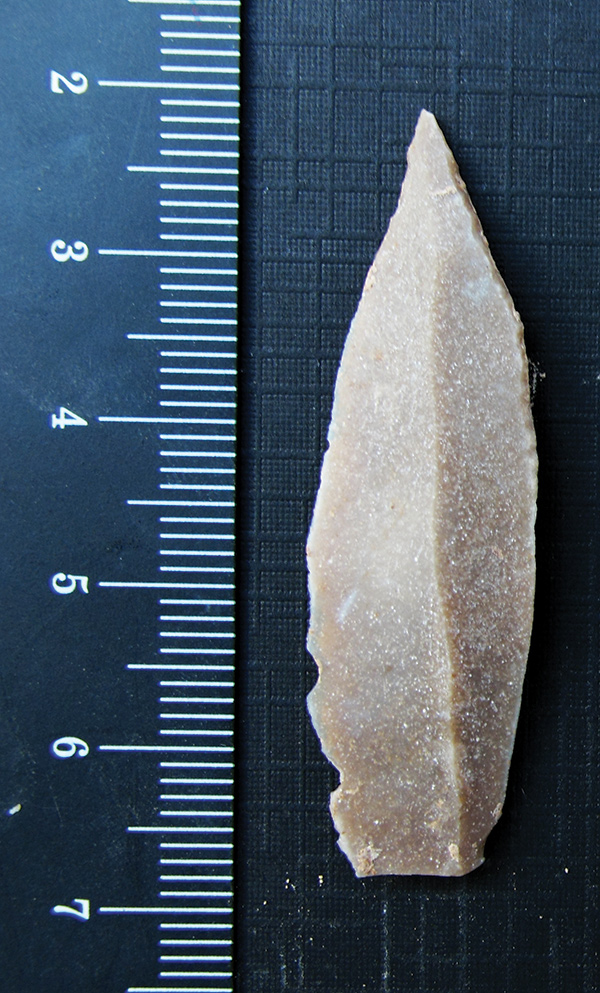Oxford-Emory Excavation Sheds Light

With the excavation of a cave in Jordan, Oxford and Emory anthropologists are learning more about the prehistory, genetic inheritance, and biology of all humans.

A flint artifact from Mughr el-Hamamah.
In summer 2010, Oxford Assistant Professor of Anthropology Aaron Stutz began excavating the previously unexplored cave with his wife, Liv Nilsson Stutz, now a lecturer in anthropology at Emory. Their research team included two undergraduates and an Emory doctoral student in anthropology.
Named Mughr el-Hamamah, meaning “Caves of the Doves,” the cave provided shelter for hunter-gatherers for about ten thousand years, during a time when humans underwent relatively rapid biological evolution. Despite having been used by twentieth-century shepherds as a goat pen, the cave protected animal bones, charcoal, and flint artifacts left behind by the hunter-gatherers. Stutz and Nilsson Stutz were surprised to find the archeological deposits in the cave so well preserved.
The carbon-14 dating results gave the anthropologists a second surprise. “We thought the site had been occupied around thirty thousand years ago, but the remains dated from closer to forty-five thousand years ago,” said Nilsson Stutz, “which puts the site at the interesting transition to the Upper Paleolithic.”
The transition from the Middle Paleolithic era—a period when the humans who lived in all of Western Eurasia were Neanderthals—to the Upper Paleolithic—when anatomically modern humans spread out of Africa—shaped a lot of the genetic inheritance and biology of all humans living today. A new site such as Mughr el-Hamamah, situated in the Jordan Valley, at the time a fertile corridor connecting Africa and Eurasia, gives researchers a better understanding of the transition and its importance in the long-term arc of human evolution. According to Stutz, “In order to understand where all of us today came from, we need to understand our past as hunter-gatherers.”
In addition to support from other sources, Oxford’s Rackley-Gregory Faculty Development Grant funded a large part of one of the survey seasons in summer 2009.
Stutz and Nilsson Stutz plan to return to Jordan for two consecutive seasons starting in summer 2012 to finish the excavation, and they look forward to bringing what they learned from the dig into the classroom.






